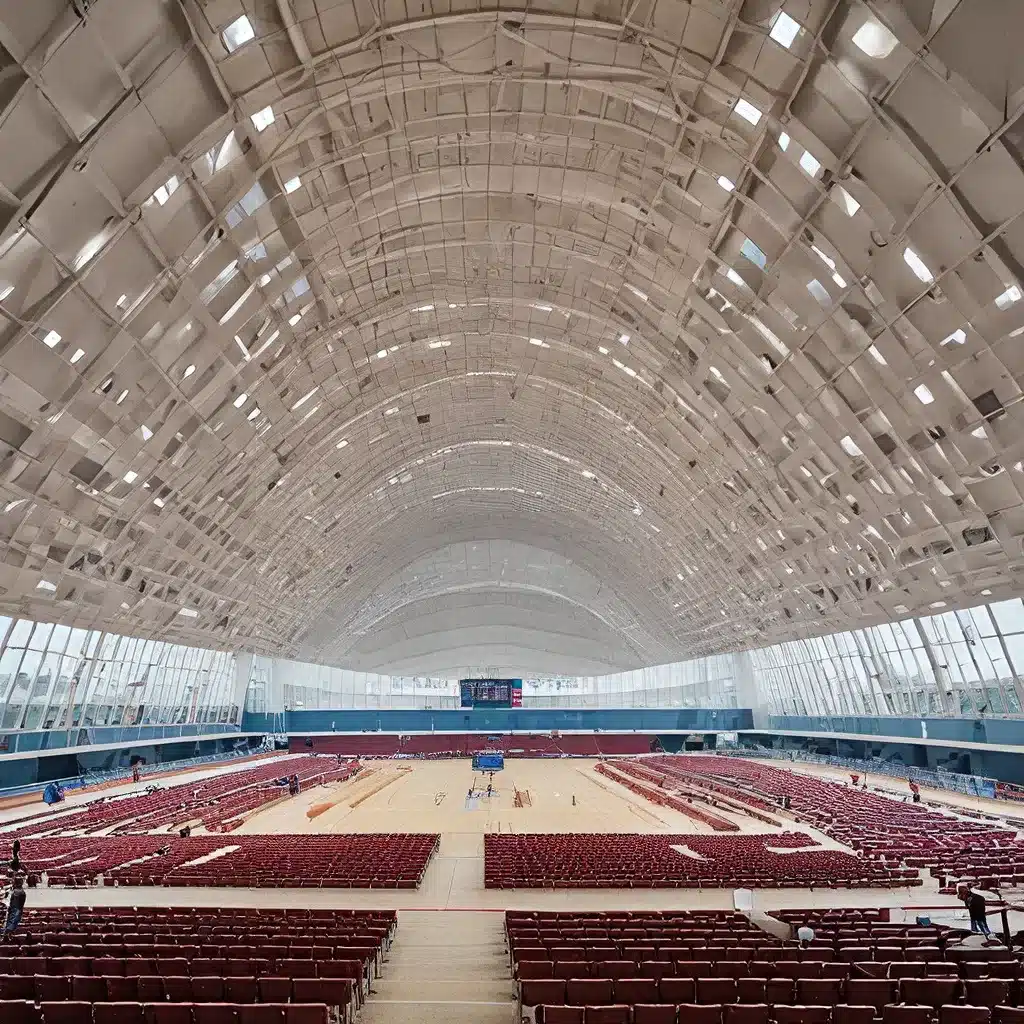
Unveiling the Architectural Masterpiece
The Wuhan Gymnasium, situated in the heart of Wuhan, China, is a visually captivating and functionally remarkable sports arena that has captured the attention of athletes, architects, and sports enthusiasts alike. Designed by the renowned global architecture and design firm Gensler, this state-of-the-art facility is a testament to the harmonious blend of innovative engineering, breathtaking aesthetics, and an unwavering commitment to sustainability.
Opened in 2024, the Wuhan Gymnasium’s striking appearance is the result of a meticulously crafted design that seamlessly integrates the building’s structural elements with its surroundings. The structure’s curved, sweeping roof lines and the strategic placement of glass panels create a striking visual contrast, allowing natural light to flood the interior and providing a sense of openness and transparency.
Gensler’s impressive portfolio of sports and entertainment venues has contributed to the firm’s reputation for excellence, and the Wuhan Gymnasium is a shining example of their expertise. The building’s design not only enhances the overall experience for athletes and spectators but also serves as a testament to the power of collaborative, innovative thinking in the realm of architectural design.
Architectural Innovations and Sustainability
One of the defining features of the Wuhan Gymnasium is its commitment to sustainable design principles. The building’s orientation and the strategic placement of its glass panels, along with the incorporation of energy-efficient systems, have resulted in a structure that minimizes its environmental impact while providing a comfortable and engaging experience for all who enter.
The gymnasium’s roof is designed to maximize natural ventilation, reducing the reliance on mechanical cooling systems and, in turn, lowering the building’s energy consumption. Additionally, the use of sustainable materials, such as recycled steel and low-emission glazing, has further enhanced the structure’s eco-friendly credentials.
Beyond the environmental considerations, the Wuhan Gymnasium’s design also prioritizes the user experience. The layout of the facility, with its thoughtfully arranged spectator seating and athlete-centric amenities, ensures that every event held within its walls is an unforgettable experience for all in attendance.
Versatility and Functional Excellence
The Wuhan Gymnasium’s versatility is another key aspect of its success. Capable of hosting a wide range of sporting events, from basketball and volleyball to badminton and table tennis, the facility has been designed to accommodate the needs of various athletic disciplines. The flexible layout and the state-of-the-art equipment found within the gymnasium allow it to seamlessly transition between different event configurations, ensuring that it remains a premier destination for both professional and amateur sports events.
In addition to its sports-related functions, the Wuhan Gymnasium has also emerged as a popular venue for cultural and entertainment events. The building’s expansive interior spaces and the availability of modern technological infrastructure have made it an attractive choice for hosting concerts, conferences, and other large-scale public gatherings.
The Impact of the Wuhan Gymnasium
The Wuhan Gymnasium has had a profound impact on the city of Wuhan and the surrounding region. As a hub for sports, entertainment, and cultural activities, the facility has become an integral part of the community, serving as a gathering place for people from all walks of life.
The gymnasium’s architectural excellence has also earned it recognition from the global design community. The building’s innovative design and its commitment to sustainability have been widely praised, and it has received numerous awards and accolades from prestigious organizations, further cementing its status as a premier sports and entertainment venue.
Beyond its immediate impact, the Wuhan Gymnasium has also inspired a renewed interest in the role of architecture in shaping the urban landscape. The building’s seamless integration with its surroundings and its ability to enhance the overall user experience have set a new standard for sports facility design, encouraging other cities and architects to rethink the way they approach the development of similar projects.
Conclusion: A Lasting Legacy
The Wuhan Gymnasium stands as a remarkable example of the power of architectural design to transform the built environment and enrich the lives of those who experience it. Through its innovative approach to sustainability, its commitment to user-centric design, and its ability to seamlessly accommodate a wide range of events, this remarkable facility has cemented its place as a true architectural symphony.
As the city of Wuhan and the surrounding region continue to evolve, the Wuhan Gymnasium is poised to remain a centerpiece of the community, serving as a hub for sports, entertainment, and cultural exchange. Its lasting legacy will undoubtedly inspire future generations of architects, designers, and sports enthusiasts to push the boundaries of what is possible in the realm of sports facility design.
For those seeking to explore the world of iconic stadiums and the stories they hold, the Wuhan Gymnasium is a must-visit destination, a true architectural masterpiece that seamlessly blends form, function, and sustainability.

